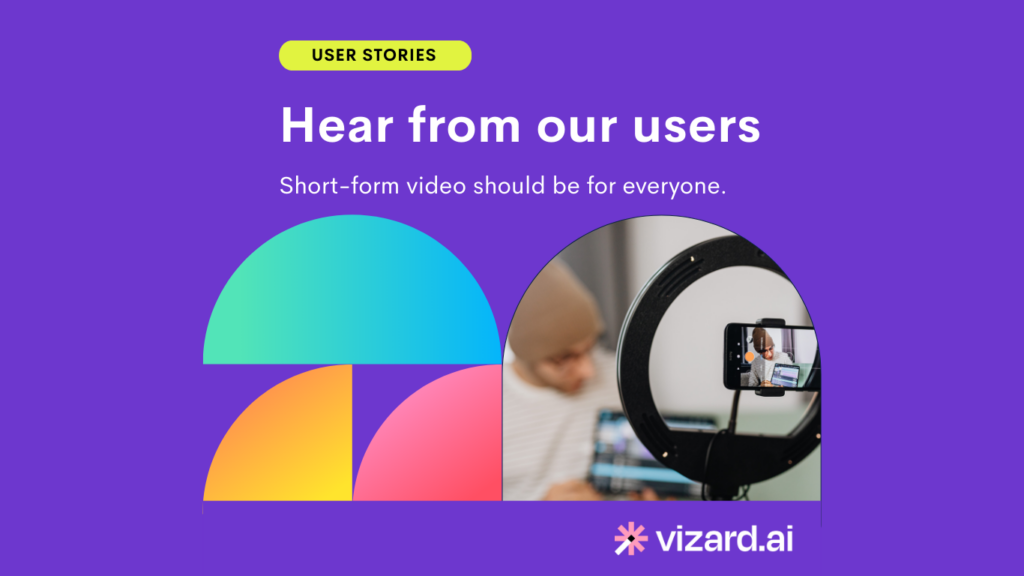Videos do a much better job of capturing people’s attention and allowing your users to retain information. Creating tutorial videos for your product holds immense value in educating users on how to effectively utilize your product and sparking their interest in it.
In this article, I will guide you through the comprehensive process of developing tutorial videos for your product. We will delve into various crucial aspects, including selecting appropriate topics, brainstorming creative video ideas, crafting detailed video outlines, and ultimately bringing your vision to life through vivid visualizations and impeccable execution. If you’ve ever wondered about the optimal approach to crafting tutorial videos, this guide is precisely what you need!

Decide the Right Content Format for Tutorial Videos
From a marketing perspective, video proves to be far more captivating than plain text. With so much content being produced today, video allows you to capture people’s attention much more effectively. By combining visuals and audio, video becomes a versatile tool that enhances message engagement and reinforcement. However, well-produced videos are much more costly to produce so you need to carefully weigh the pros and cons of using video to deliver your messages. Before diving into video production, it’s crucial to evaluate whether video is truly the optimal strategy for your goals.
To determine whether video is the most suitable format, there are a few questions you can address yourself: Is your goal to capture attention from your audience? Are you explaining a complex object or product? Are you trying to build a more personal brand?
If you’ve answered affirmatively to any of these questions, video can prove to be an effective format for your content. However, before diving into the creation of any individual piece, it is crucial to assess the appropriate channel for your video content.
Find the Right Distribution Channel for Your Tutorial Videos
When it comes to choosing the right channels for your tutorial videos, platforms like YouTube and TikTok can serve as excellent top-of-the-funnel channels. These platforms offer vast audiences and the opportunity to deliver content that has broad appeal to your target demographic. For example, creating informative and entertaining videos that address common challenges in your industry can capture the attention of potential customers who are actively seeking solutions related to your product or service. By focusing on providing valuable insights, tips, and solutions, you can establish your brand as an authority in the field and generate initial interest and awareness. Don’t go straight into selling or product, or ask the audience to buy, or like and subscribe. Make sure that you are creating content that’s generally useful for these larger kinds of problems that folks are trying to solve.
Bottom-of-the-funnel product-related content is more challenging to generate. However, this doesn’t mean they are not valuable. For example, you can create tutorial videos hosted on your website as part of your help center content. These tutorial videos can have specific features, tips, and tricks, to help existing users to deepen their understanding and usage of your product.
Regardless of the chosen channel, it is crucial to select one that aligns with your target audience and business objectives. Each channel has its unique appeal to different audiences and requires different approaches to creating content. Taking the time to understand the preferences and behaviors of your audience on each platform is essential. By conducting thorough research and analysis, you can gain insights into the type of content that resonates well with your audience.
Connecting Channels and Guiding Viewers
The last piece of foundation to your video strategy is to think about the customer journey for your video content, whether they are on YouTube or your website. The key is to integrate these channels seamlessly.
Your videos should have clear pathways leading to them as well as pathways leading away from them. For example, when leveraging YouTube as a platform, it’s crucial to strategize how viewers will discover your content. Will you drive views through your social media channels, or will you focus on optimizing your videos for YouTube SEO? Additionally, after viewers have finished watching your videos, it’s essential to consider where they can go next. While it’s easy to settle for a generic call-to-action, it’s worthwhile to think creatively about the specific actions you want your users to take.
For instance, you may want to prompt viewers to engage in different activities. In the case of a tutorial video where you are teaching viewers something, the goal is to encourage people to take action. Therefore, it’s essential to thoughtfully consider the desired end results for such videos.
Understanding Your Audience
The foundation of any successful video content creation begins with a deep understanding of your target audience. It’s essential to go beyond broad demographics and truly visualize the specific person who will be watching your video. Envision their job, their goals, and the challenges they face. By honing in on the individual’s needs and the specific task they’re trying to accomplish, you can create videos that are genuinely useful and valuable to them.
Instead of getting lost in generic personas, I encourage focusing on specific tasks and the value your video can provide. Consider the job that the viewer is trying to accomplish and develop content that directly addresses that need. This approach ensures that your videos resonate with your audience on a personal level and offer tangible solutions to their challenges.
To gather valuable insights about your target audience and their needs, there are two primary sources to explore. First, analyze your customer data to identify trends and pain points. Look for patterns in how customers utilize specific features or solve particular problems with your product. If there is a disconnect between your product’s intended use and its adoption, it’s crucial to bridge that gap and align your content accordingly.
Secondly, engage in conversations with customers or potential users who are facing the problem you aim to solve. Dive deep into understanding their struggles, their thought processes, and the events that led to their need for a solution. By actively listening to their experiences and perspectives, you can gain valuable insights that will shape the direction of your video content.
Before embarking on video content creation, invest time in comprehending your audience at a granular level. Visualize the specific person behind the screen, analyze customer data, and engage in conversations to gather insights. Armed with this understanding, you can create video content that truly connects with your audience, drives engagement, and delivers tangible results.
Brainstorming Video Topics
When it comes to brainstorming video topics, there are various approaches to identify topics that truly resonate with your audience. Two key methods that can guide your ideation process are qualitative research and obtaining qualitative feedback.
Obtaining qualitative feedback from your audience serves as a valuable approach for generating video topic ideas. Feedback forms, reviews, and comments can provide specific data and insights that shed light on your audience’s needs, preferences, and pain points. Qualitative feedback will serve as the foundation for your video content that directly addresses customer concerns.
Next you can expand your topic list through conducting further research. Utilize tools such as Google or Vidiq to explore popular search queries and analyze YouTube-specific keywords queries. By scrutinizing search phrases, you can pinpoint common questions or keywords that people are actively searching for. This quantitative data allows you to identify gaps in existing video content and uncover new opportunities. It’s crucial to focus on understanding the search volume and competitiveness of specific keywords or topics. You can then seek out areas where you can offer fresh perspectives or solutions that meet your audience’s needs. Although this research might not directly yield video titles, it serves as a valuable foundation for ideation by honing in on the specific audience you’re targeting and the topics or questions that resonate with them.
Create Tutorial Videos in 5 Steps
Once you have a grasp of your audience’s interests and identify keyword opportunities, you can employ tools like ChatGPT to generate a list of relevant questions based on your chosen topic. This transition from broad topics to specific questions directly informs your video content.
Step 1: Defining the Scope
When it comes to crafting impactful videos, it’s crucial to have a clear scope that encompasses everything you want to include. Your customer knowledge serves as the starting point, providing valuable insights to shape your video’s content. Additionally, identifying the desired outcome of your video acts as the ultimate objective, guiding the viewer towards a specific action or result. Within this framework, lies the scope of all the elements you need to include in your videos.
To determine the scope, consider the desired outcome or action that viewers should be able to take after watching your video. By focusing on the impact you want your video to have, you can shape the content in a way that leads viewers towards a specific goal.
During the ideation phase, it’s important to select one topic per video that directly addresses a specific question or job. By keeping the focus narrow and concise, you can deliver clear and valuable information to your audience. This approach ensures that your videos remain focused and avoid overwhelming viewers with too much information.
By honing in on these essential elements—customer knowledge, desired outcome, and target audience—you can create videos that are focused, effective, and purposeful. Your scope will encompass all the necessary elements that contribute to achieving the desired outcome.

Step 2: Creating a Video Outline
Once you have your topic and scope for your video, the next step is establishing an outline for your video. This step is all about determining what you want to explain and creating a logical structure for your video. Here’s a breakdown of the organization process:
Identify the one central idea or concept that you want to convey in your video. This key topic serves as your thesis statement and sets the focus for the entire video.
Think of up to three examples, illustrations, or pieces of information that support your key topic. These can be visuals, metaphors, case studies, stories, or relevant data. The purpose of these supporting points is to reinforce and strengthen your key topic.
Create a simple outline by writing down your key topic and the supporting points. This outline serves as the framework for your script and helps you stay focused during the video creation process.
Remember, the goal is to keep your video concise and impactful. If you’re working with a shorter video duration, you may only need one supporting point. Be mindful of the time constraints and choose the most compelling and relevant supporting points accordingly. Remember, this is an outline, not a detailed script or storyboard. The purpose is to organize your thoughts and ensure a clear and logical flow of information in your video.
Step 3: Conduct Research
When it comes to creating tutorials, it’s important to base your information on reliable sources and avoid making unsubstantiated claims.
Instead of relying solely on personal experience or popular blog posts, start by conducting research to find high quality references that support your key points. Go beyond surface-level information to dig deeper and evaluate the sources behind those claims. This provides real answers to the problem you’re addressing and ensures that your content can go beyond generic marketing content.
Highlight the research-backed information you’ve gathered to show your audience why they should pay attention to your content. By providing valuable insights and evidence-based findings, you demonstrate that you’ve done the work for them and offer genuine solutions to their problems.
Step 4: Iterate on Your Video Tutorial Content
Your meticulous approach to structuring and testing your video content is commendable, as it allows for continuous improvement. Breaking down your video into key topics and examples, and visualizing the presentation of each scene, enables you to craft a clear and coherent message. Through testing and gathering feedback at different stages, you can refine your content and make valuable enhancements along the way.
Beginning with a focus on the core message and developing a script for each scene prevents overwhelming complexity and ensures you prioritize the essential elements. By testing the script and scenes with others, you gain insight into the effectiveness of your content. Integrating an engaging hook and a clear call to action adds an interactive element and guides your audience toward a specific next step.
Your emphasis on testing and iteration throughout the process is vital. Seeking feedback early on and making incremental improvements safeguards against investing significant time and effort into a video that falls short of expectations. Moreover, it helps combat creator’s block and allows you to refine your content based on valuable input received.
Embracing feedback and adapting your video content through smaller iterations leads to enhanced quality and relevance, ensuring resonance with your audience. Once you have a solid understanding of your video content, this iterative process empowers you to deliver impactful and compelling videos that captivate your viewers.
Step 5: Produce the video
When it comes to producing your videos, there are several important decisions to consider based on the type, format, and goal of your content. The specific video production process you adopt will vary depending on these factors. Let’s explore some considerations for different scenarios.
For top-of-funnel videos aimed at capturing audiences’ attention, it can be effective to have a real person appear on camera. This human element adds authenticity and engages viewers on a personal level. Consider incorporating energetic and captivating individuals who can effectively hype up the audience and create an engaging experience.
On the other hand, for simple product walkthroughs, there are options to streamline the production process. One approach is to record your screen using screen recording software like Vizard. This allows you to demonstrate the features and functionalities of your product effectively. Alternatively, you can explore video generator tools like Synthesia, which leverage AI avatars to present your content. These tools can expedite the video creation process and provide a unique visual element.
The key is to align your production decisions with your specific goals and the intended impact on your audience. Whichever video creation tools you choose, make sure it enhances the overall viewer experience and effectively conveys your message.
Conclusion
Through iterative refinement and attention to production details, you can deliver impactful and compelling video tutorials that captivate your audience and educate your users. Use Vizard to start record, edit and create tutorials today!








